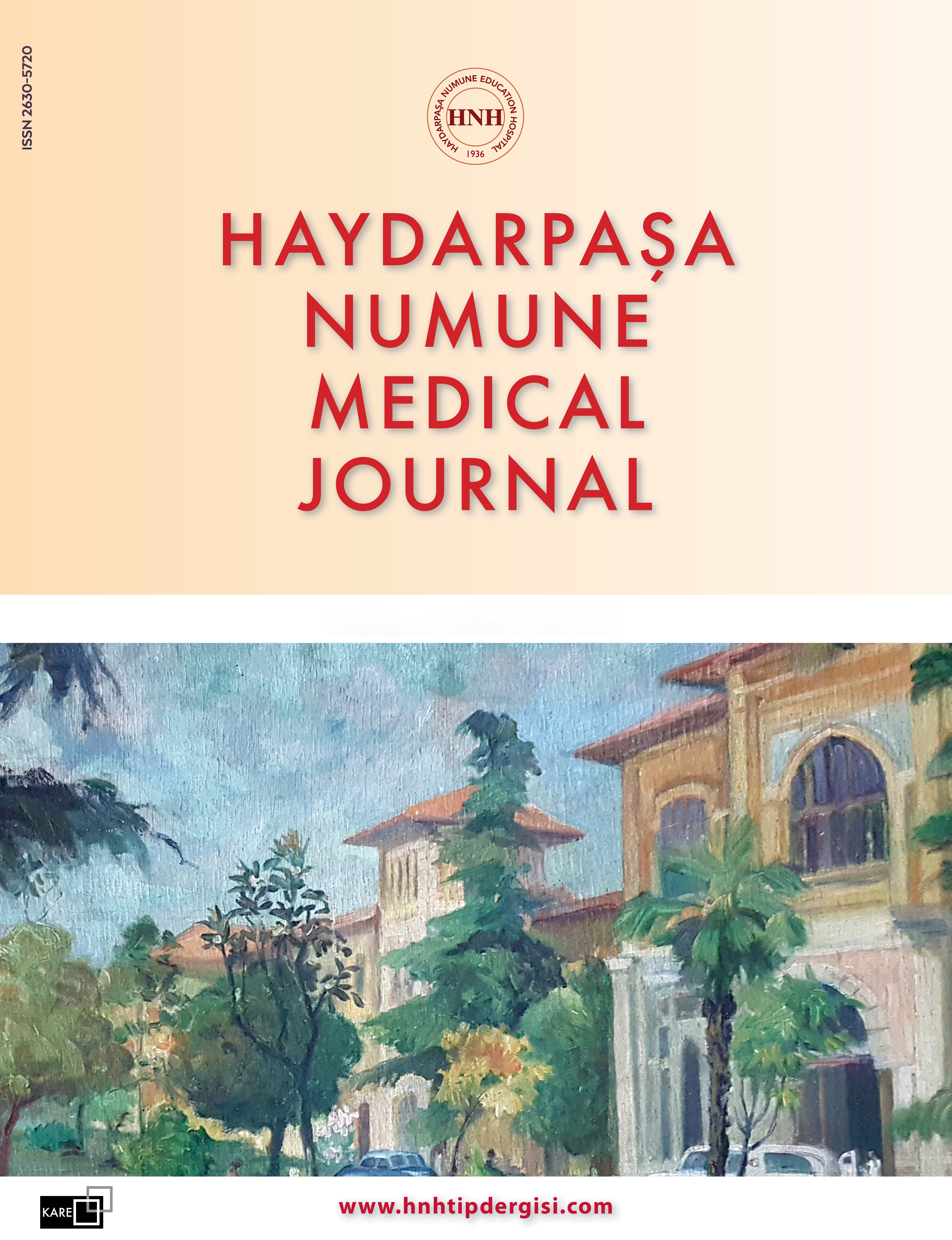Analysis of Difference Between Survivals in Seventh and Eighth Editions of TNM Staging in Resectable Multiple Primary Lung Cancers (MPLC)
Elçin Ersöz Köse1, Cansel Atınkaya Baytemir2, Mustafa Akyıl1, Rıza Serdar Evman1, Abidin Levent Alpay2, Irfan Yalçınkaya21Department of Thoracic Surgery, Health Sciences University, Süreyyapaşa Chest Diseases and Thoracic Surgery Training and Research Hospital, İstanbul, Türkiye2Department of Thoracic Surgery, Health Science University, Hamidiye Medicine Faculty, İstanbul, Türkiye
INTRODUCTION: Staging of multiple primary lung cancer (MPLC) cases and planning the treatment are of great importance in terms of the prognosis of the disease. Size of lung lesion (T) and lymph node status (N) are of the most reliable indicators of prognosis in patients with lung cancer. In this study, we evaluated whether there was a survival difference in T and N status in the survival analysis of the seventh and eighth edition of staging in MPLC who underwent curative radical surgery.
METHODS: A total of 55 patients diagnosed with MPLC in our clinic between January 2000 and April 2016 were retrospec-tively screened. These patients were divided into 2 main groups: 20 synchronous and 35 metachronous lung cancers. Survivals for both groups were calculated according to both the seventh and eighth edition of TNM staging systems (TNM7 and TNM8), taking into account the tumor sizes at first operation, stages, lymph node presence, histopathological type, and tumor localization.
RESULTS: In our study, a statistically significant difference was found in terms of survival between tumor sizes and stages in TNM7 staging system, according to the results of the pairwise comparison test applied in synchronous lung cancers (p<0.05). However, no statistically significant difference was found in terms of survival in TNM8 staging system (p>0.05). In metachronous lung cancers, no statistically significant difference was found in terms of tumor size and survival between stages in both TNM7 and TNM8 staging systems according to the results of the pairwise comparison test (p>0.05). A statistically significant difference was found between lymph node groups in terms of survival in TNM8 staging system in synchronous and metachronous lung cancers (p<0.05). Staging according to the TNM8 staging system in synchronous lung cancers changed in 11 of our patients and in 22 patients in metachronous lung cancers.
DISCUSSION AND CONCLUSION: TNM7 staging was found to be more sensitive in terms of survival difference according to tumor size and stages in synchronous tumors, while TNM8 staging was found to be more sensitive in terms of survival difference due to lymph node involvement in both synchronous and metachronous tumors. In cases with MPLC, the proposed eighth edition of staging system is superior to the seventh edition as descriptors of tumor sizes are elaborated.
Makale Dili: İngilizce
















